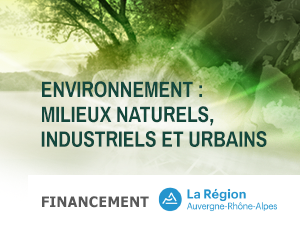Agricultural losses due to insect pests amount to approximately 250 billion euros worldwide [l]. To date, crop protection relies almost exclusively on chemical treatments responsible for significant environmental damage, the emergence of resistance in certain insect pests [2] and residues that can potentially prove dangerous to human health [3]. Societal and health concerns create the need to find new ecological solutions. The "Ecophyto 2" plan of the French government published in October 2015, imposes the reduction of half of chemical pesticides by 2025, and the discovery of new solutions for agriculture [4]. In addition, in September 2018, the French government completely banned the use of neonicotinoids, the most widely used and decried chemical insecticides in the world [5,6].
A serious alternative to the use of synthetic insecticides is the use of anti-insect nets in the fields which would protect them from insect infestations [7]. Currently, there is also a recycling problem with the classic versions made of synthetic materials such as high density polyethylene (HDPE): to recycle them it is necessary to separate them from plant debris, which makes treatment difficult and expensive. These conventionally used polymers are neither biodegradable nor compostable. For these different reasons, a growing number of companies are turning to the production of bioplastics, which is currently estimated at 1.7 million tonnes and continues to increase significantly to reach an increase of around 400%. in 2019. Europe is the largest applicant for bioplastics, but its production capacity remains extremely low. In addition, new French and European regulations as well as environmental challenges such as plastic pollution represent a real opportunity for the development of new biosourced and/or compostable materials for different market segments such as compostable films for agricultural fields, flexible and rigid packaging, including the world of food packaging [8-9]. It is in this major environmental context that we are working on the eco-design of a new generation of anti-insect nets in Biosourced, Biodegradable Polymers and enriched with Bio-insect repellents (EcoPB3).
[1] Diagne C, et al. InvaCost, a public database of the economic costs of biological invasions worldwide. Sci Data. 7(1): 277 (2020). [2] Bass C, et al. The global status of insect resistance to neonicotinoid insecticides. Pestic Biochem Physiol. 121 : 78-87 (2015). [3] Rapport INSERM, Pesticides: Effets sur la santé Une expertise collective de l'Inserm pp1-146. https://www.inserm.fr/information-ensante/expertises-collectives/pestici...(2013)[4]Plan Ecophyto 2 http://agriculture.gouv.fr/sites/minagri/files/151022 ecophyto.pdf (2015). [5]Ban on neonicotinoid insecticides: France is leading the way in Europe https://www.gouvernement.fr/en/ban-on-neonicotinoid-insecticidesfrance-i... (2018). [6]Goulson, D. Call to restrict neonicotinoids. Science 360, 973-973, doi:IO. 1126/science.aau0432 (2018). [7]Cambra M; et al. Sharka, a vector-borne disease caused by Plum pox virus: vector species, transmission mechanism, epidemiology and mitigation strategies to reduce its natural spread Acta Hortic. 1163(1163) : 57-68 (2017). [8]Spierling S, et al. Circular Economy—Performance Indicators to Identify Optimal Pathways Progress in Life Cycle Assessment, 147-154 (2018).


